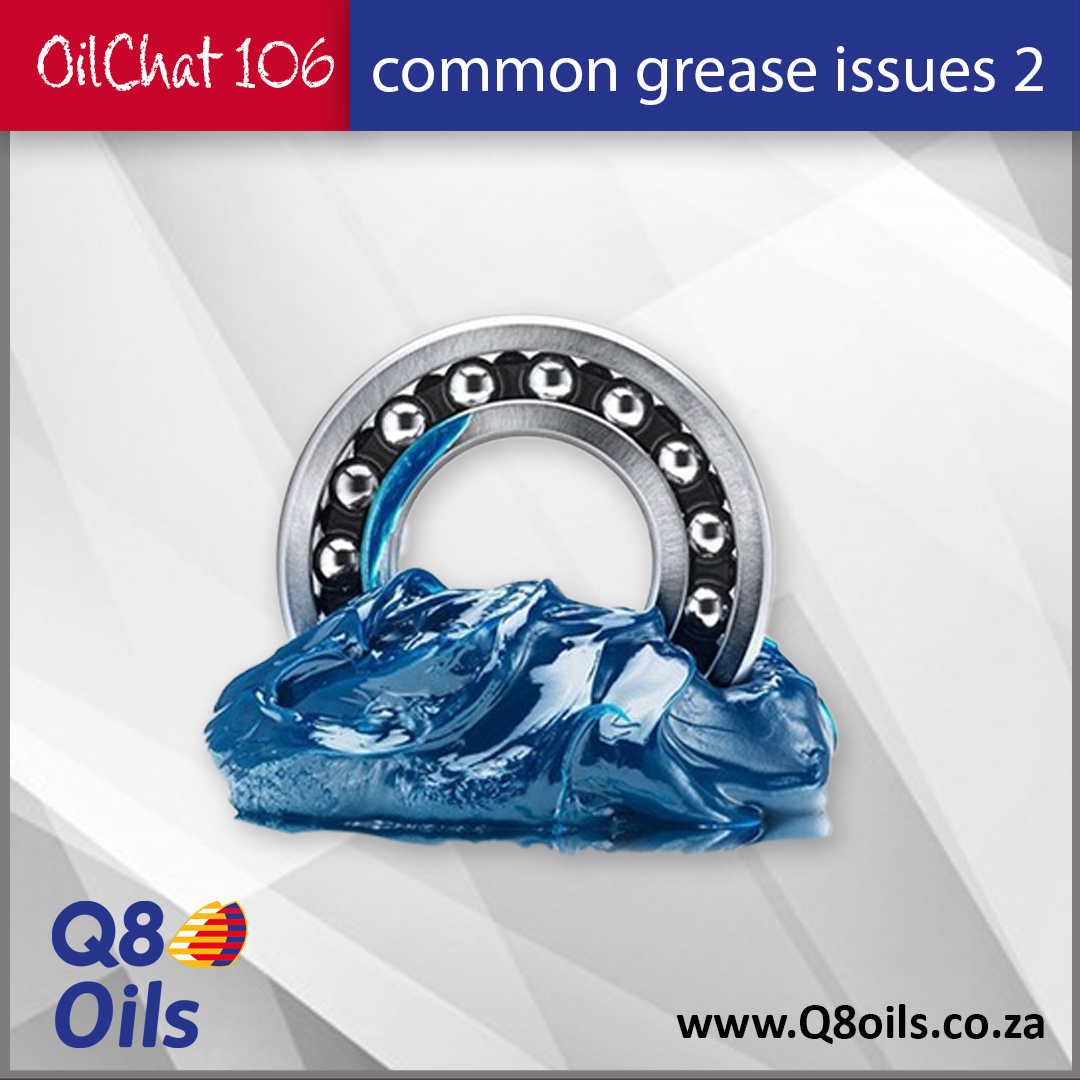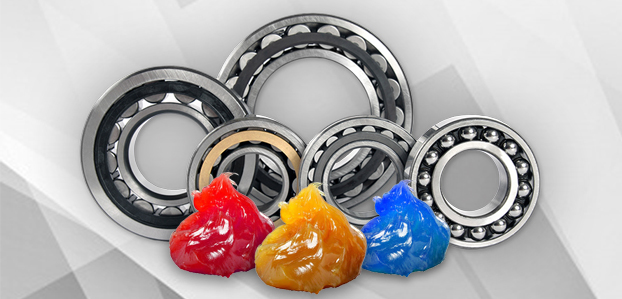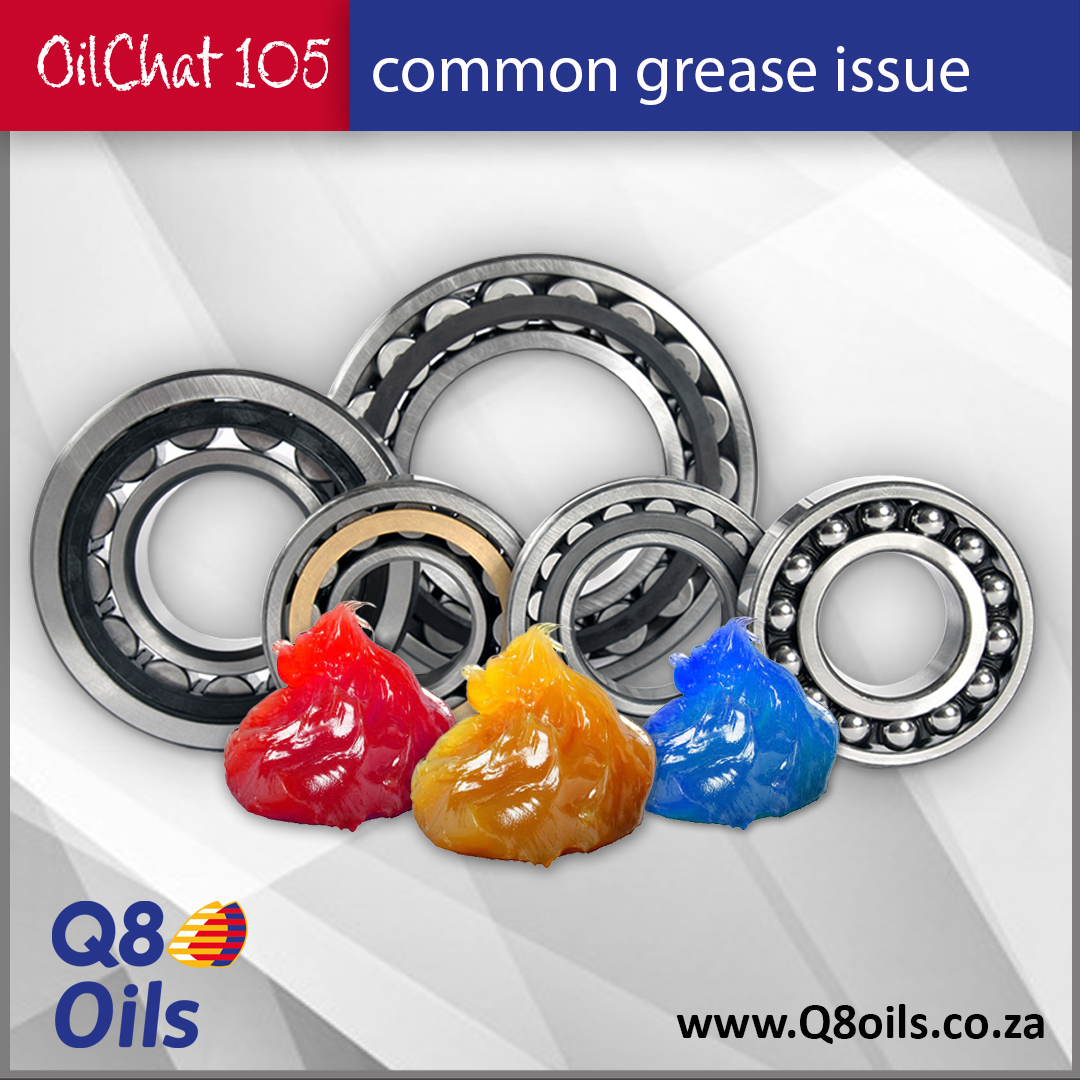
In today’s competitive industrial world, you cannot afford to have machines that are not working 100% efficiently at all times. Even though lubrication may not get as much attention as new technologies or automation, it is key to running your operation smoothly. When everything is going well, it is easy to forget about it, but it is important to focus on lubrication to avoid problems and expensive breakdowns.
Oil Bleeding Out of Grease. If you see oil leaking out of a grease, either during storage or in service, it is called bleeding. Heat, vibration, or simple gravity can cause the oil to separate from the thickener structure.
Solution: Switch to a grease with a more stable thickener. For instance, upgrading from a basic lithium grease to a lithium complex grease will usually improve mechanical stability and reduce bleeding.
Grease Caking. Grease that dries out or forms a hard cake is often suffering from excessive oil separation, evaporation, or compatibility problems between thickeners. Caking can also be the result of increased temperatures caused by over-greasing sealed housings.
Solution: Try a grease that can handle higher temperatures but be aware of grease compatibility problems. You may also need to adjust your service intervals – shortened greasing cycles for open bearings or increased intervals for enclosed bearings.
Mixing Incompatible Greases. When two incompatible greases are mixed, several performance capabilities can be negatively affected. The grease may undergo a change in consistency, either softening or stiffening. The mixture might also show a lowered dropping point, a change in its shear stability or an increase in oil separation. The biggest culprit behind incompatibility is thickener chemistry, but base oil and additive incompatibility can also play a role. Even products using the same thickener family (like changing from one lithium complex to another lithium complex) can behave differently depending on the formulation.
Solution: If you are unsure whether two greases are compatible, it is safest to assume they are not. Always purge old grease as much as possible and monitor equipment temperatures closely after any changeover.
Grease Will Not Flow Through a Centralized System. Grease that is too cold, too thick, or too tacky may clog lines and not reach critical components. Ideally, centralized systems need a softer grease (NLGI 0 or NLGI 1) with minimal tackifiers.
Solution: Inspect storage containers for oil pooling that indicates separation. If needed, move to a lower NLGI grade grease or one with a lower base oil viscosity. Always match the product to the design specifications of the system.
Other Dispensing Problems. Cold or improperly stored grease can cause air pockets in tubes and poor flow from containers. The absence of follower plates in grease drums can lead to dispensing problems as well as wasted product.
Solution: If you are using pail or drum pumps, ensure they have proper follower plates. A follower plate is a device making it possible to pump grease directly from a drum. The grease pump creates a vacuum that pulls the follower plate to the bottom of the container, as shown on the right, collecting the grease along the way down. A follower plate has four key benefits:
- Keeps the grease clean and preserves its characteristics.
- Compresses the grease and prevent air pocket formation and pump cavitation.
- Helps collect grease from the bottom of the drum, which would otherwise remain wasted.
- Improves the overall performance of the pump.
Grease Fails or Runs Out Prematurely
When grease breaks down too fast, the root causes often include heat, bearing speed, mechanical impact, or chemical contamination.
Solution: Lower the operating temperature if possible, improve contamination control, and select greases with higher viscosity base oils, more tackifiers, or a higher NLGI grade for better mechanical stability.
In the next issue of OilChat we will address some further common grease problems and how you can fix or prevent them. If you have any questions concerning grease in the interim, you are welcome to phone us on 011 462 1829, email us at info@bcl.co.za. or visit www.bcl.q8oils.co.za.






 Today we drill down through the layers of sand and sedimentary rock to reach the porous rock formations that contain the oil and gas deposits. Contrary to what you may have believed up to now, extracting the crude oil is more like sucking liquid from a sponge with a straw than from a puddle of liquid.
Today we drill down through the layers of sand and sedimentary rock to reach the porous rock formations that contain the oil and gas deposits. Contrary to what you may have believed up to now, extracting the crude oil is more like sucking liquid from a sponge with a straw than from a puddle of liquid.

 Wire ropes are made up of multiple strands of wires twisted together. Each strand consists of several wires, and the strands are then twisted around a core (which can also be made of wires or other materials) as shown on the right. The construction allows for flexibility and strength, making wire ropes suitable for heavy lifting and rigging applications such as cranes, elevators, mine hoists and marine applications.
Wire ropes are made up of multiple strands of wires twisted together. Each strand consists of several wires, and the strands are then twisted around a core (which can also be made of wires or other materials) as shown on the right. The construction allows for flexibility and strength, making wire ropes suitable for heavy lifting and rigging applications such as cranes, elevators, mine hoists and marine applications. The extent to which wires move in a rope when it bends, is illustrated by the example of what actually happens when you wrap a 1 inch (25 mm) rope over a 30 inch (760 mm) sheave. The circumference of a 32 inch circle is slightly more than 6 1/4 inch longer than that of a 30 inch circle. Since the rope only touches half of the sheave at any time, the length differential which the rope must accommodate is 3 1/8 inch – almost 80 mm. This change of dimension is achieved by the sliding and adjusting of the strands in relation to one another, and a similar sliding and adjusting of the individual wires within each strand.
The extent to which wires move in a rope when it bends, is illustrated by the example of what actually happens when you wrap a 1 inch (25 mm) rope over a 30 inch (760 mm) sheave. The circumference of a 32 inch circle is slightly more than 6 1/4 inch longer than that of a 30 inch circle. Since the rope only touches half of the sheave at any time, the length differential which the rope must accommodate is 3 1/8 inch – almost 80 mm. This change of dimension is achieved by the sliding and adjusting of the strands in relation to one another, and a similar sliding and adjusting of the individual wires within each strand.












 In the sample on the left all the oil and water are demulsified.
In the sample on the left all the oil and water are demulsified.